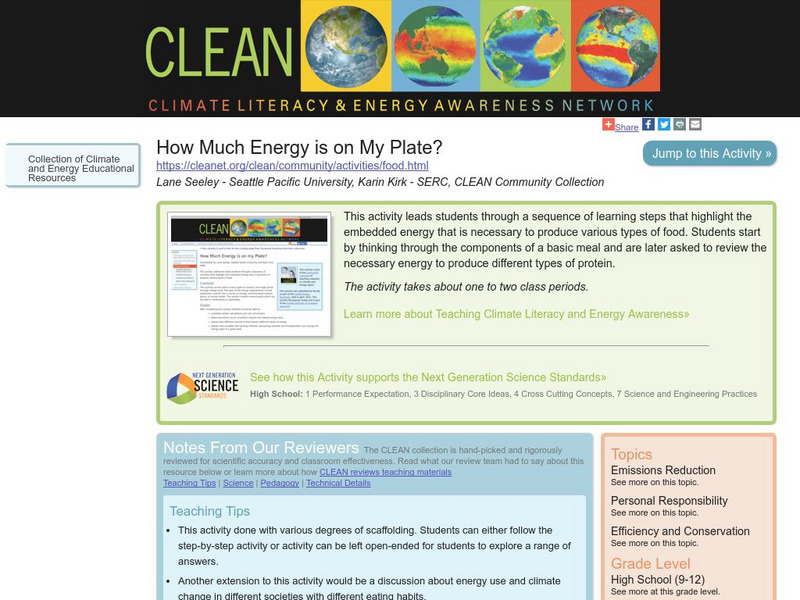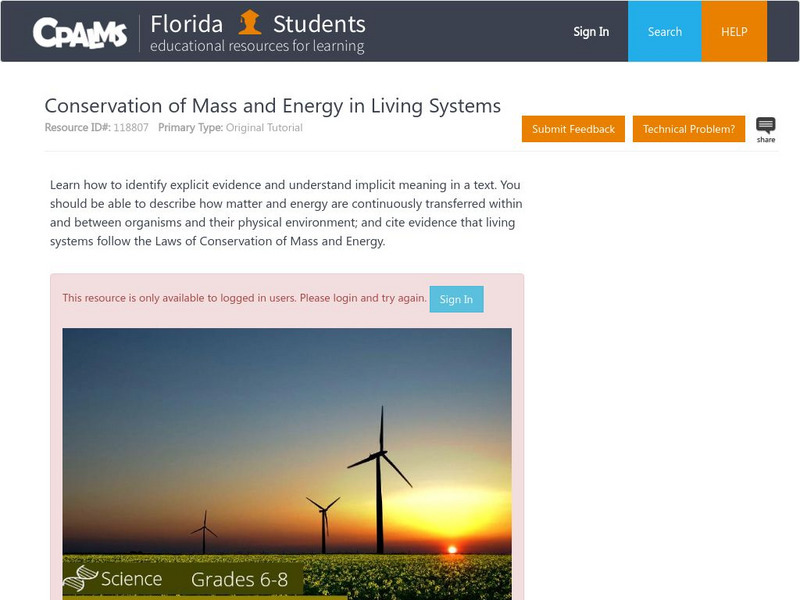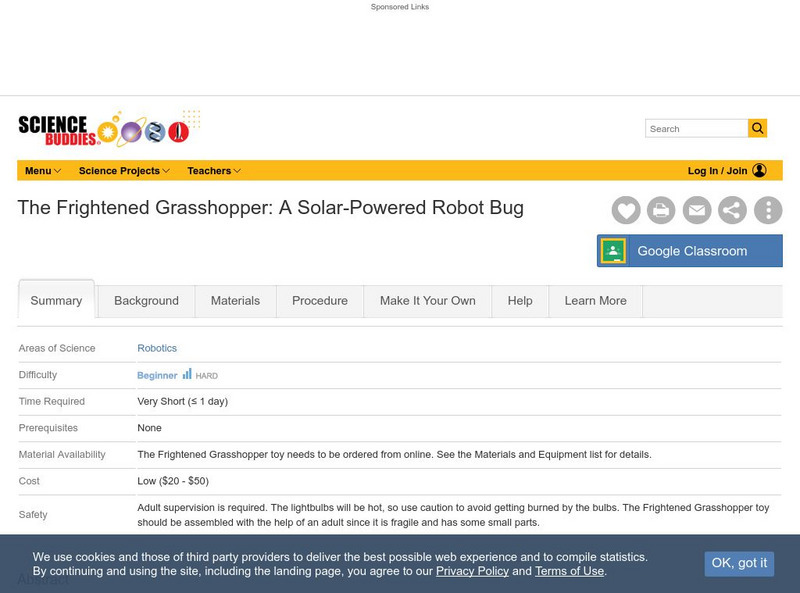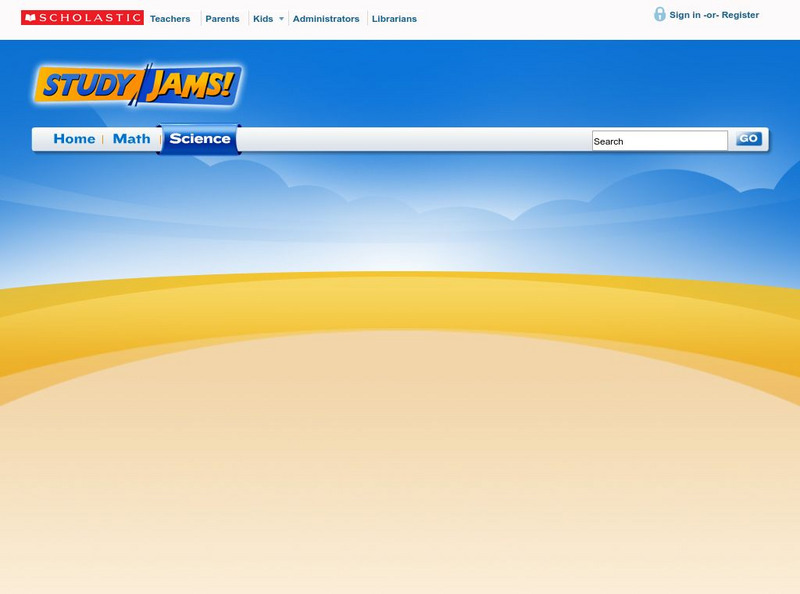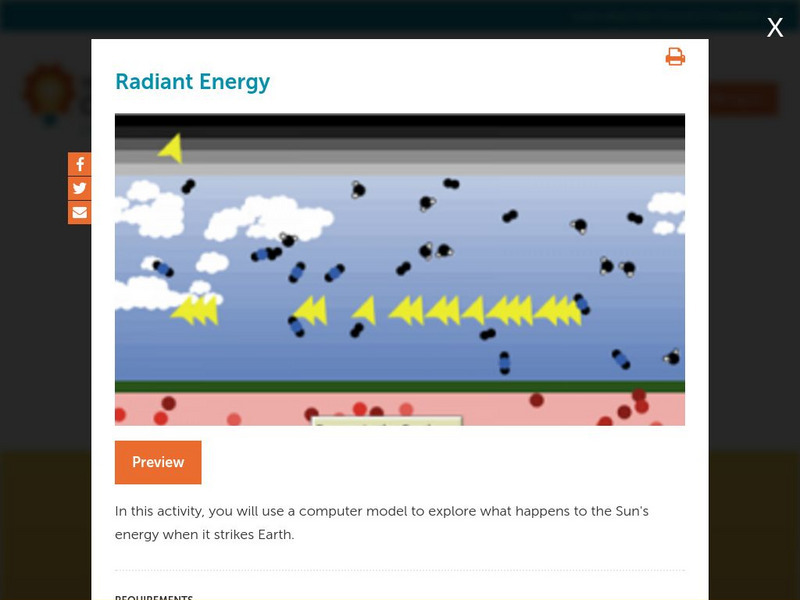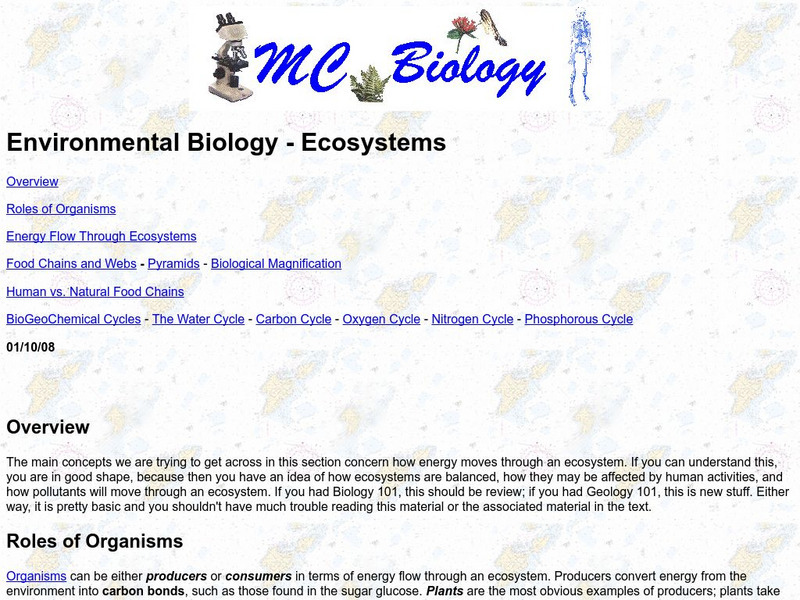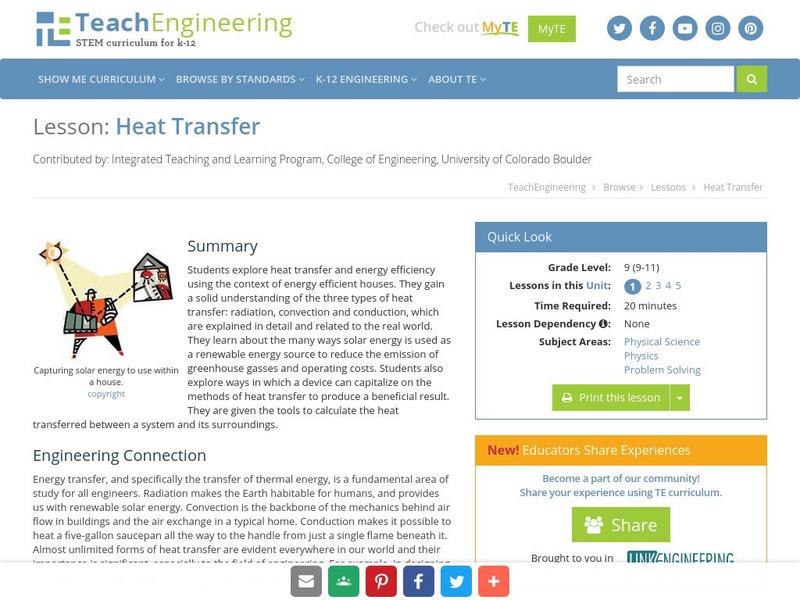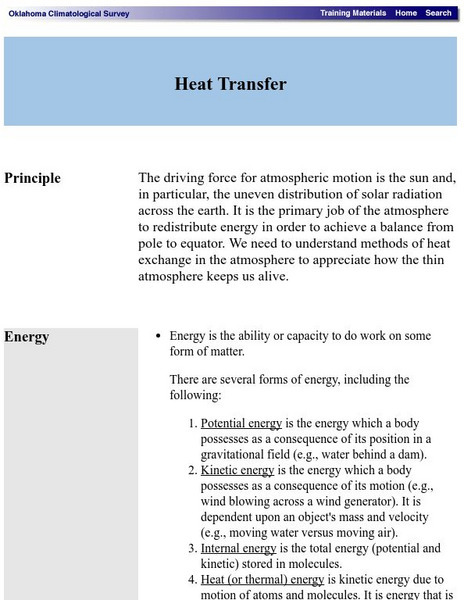Concord Consortium
Concord Consortium: Energy of a Pendulum
In this interactive, drag a pendulum to set its initial height and observe how height is related to potential energy. Then release the pendulum and observe the change from potential energy to kinetic energy, and ultimately to thermal...
Climate Literacy
Clean: How Much Energy Is on My Plate?
This activity leads students through a sequence of learning steps that highlight the embedded energy that is necessary to produce various types of food. Students start by thinking through the components of a basic meal and are later...
CPALMS
Florida State University Cpalms: Florida Students: Conservation of Mass and Energy in Living Systems
Learn about the conservation of mass and energy as it applies to different living systems.
Science Education Resource Center at Carleton College
Serc: Energy Pyramids in Different Biome Locations
A research activity where young scholars research the various biotic and abiotic factors that combine to make up a biome. The end product will be the creation of a PowerPoint presentation that identifies these factors and the creation of...
Science Buddies
Science Buddies: Project Ideas: Electronics and Solar Energy With a Robot Bug
In this science fair project, use the "frightened grasshopper" solar-powered toy to explore how solar energy is converted into kinetic energy. The Science Buddies project ideas are set up consistently beginning with an abstract,...
The Tech Interactive
The Tech Museum of Innovation: Save the Hiker [Pdf]
Can you build a device that will deliver life-saving treatment to someone in a hazardous situation? During this lesson, students will learn how energy is converted and transferred between objects. Working in groups and through the...
OpenStax
Open Stax: Heat Transfer Methods
In this section of the textbook, learn about the methods of heat transfer: conduction, convection, and radiation. Book can be downloaded.
OpenSciEd
Open Sci Ed: 6.2 Thermal Energy Teacher Professional Development Overview
This four-day professional development session introduces teachers to the OpenSciEd materials generally in addition to the 6.2 Thermal Energy unit.
Sophia Learning
Sophia: Transfer of Energy: Lesson 1
This lesson explains the difference between the types of energy, including Potential Energy and Kinetic Energy. It is 1 of 2 in the series titled "Transfer of Energy."
Texas Education Agency
Texas Gateway: Kinetic Energy and the Work Energy Theorem
By the end of this section, you will be able to explain work as a transfer of energy and net work as the work done by the net force and to explain and apply the work-energy theorem.
Scholastic
Scholastic: Study Jams! Science: Energy, Light and Sound: Heat
A video and a short quiz on heat, covering its difference from temperature, thermal energy, and the means by which heat is transferred.
Wisc-Online
Wisc Online: Heat and Heat Transfer Part 1
Review heat and heat transfer by solving these seven phrases! Then move on to "Heat and Heat Transfer Part 2"
Wisc-Online
Wisc Online: Heat and Heat Transfer Part 2
After completing Heat Transfer 1, review heat and heat transfer by solving these seven terms.
Concord Consortium
Concord Consortium: Stem Resources: Radiant Energy Flow
A virtual lab to look at the physical features of Earth that affect the amount of the Sun's energy that hits Earth. Students investigate how solar and infrared radiations enters and leaves the atmosphere with this model. Virtual lab...
eSchool Today
E School Today: Mechanical Energy
Learn about mechanical energy, and its forms of potential and kinetic.
Open Curriculum
Open Curriculum: Work: The Transfer of Mechanical Energy
Read this illustrated article to help you understand the concept of work in regards to the transfer of mechanical energy.
Other
Marietta College: Biology: Energy Flow Through the Ecosystem
Read to understand how energy and inorganic nutrients flow through a food chain in an ecosystem.
American Chemical Society
Middle School Chemistry: Changing State: Melting
Discover the concept that energy transfer and molecular motion cause the change in state from a solid to a liquid. Also compare state changes of water to the state changes of other substances.
Other
Ed informatics.com: What Is Work, Energy and Power?
Defines work, energy, and power. Explains the work-energy principle, types and forms of energy, and presents some exercises to try.
TeachEngineering
Teach Engineering: Heat Transfer
Students explore heat transfer and energy efficiency using the context of energy efficient houses. They gain a solid understanding of the three types of heat transfer: radiation, convection and conduction, which are explained in detail...
Oklahoma Mesonet
Oklahoma Climatological Survey: Heat Transfer
A discussion from the Oklahoma Climatological Survey of the thermal factors effecting the movement of air masses in the atmosphere. Numerous topics such as methods of heat transfer, latent heat, phase changes (including sublimation and...
FT Exploring
Ft Exploring: Energy, Heat Flow, and Life
Here you can learn all about heat flow, one of the major driving forces of nature, and how it works. It is the force behind weather, photosynthesis, animal behavior, and much more.
Khan Academy
Khan Academy: What Is Power?
Learn what power means and how we use it to describe the rate of energy transfer.
Oklahoma Mesonet
Oklahoma Climatological Survey: Earth's Energy Budget
This 2-part resource details how the Earth absorbs just enough energy from the Sun to sustain life. Content explores incoming solar radiation and outgoing terrestrial radiation.
Other popular searches
- Energy Transfer Diagrams
- Energy Transfer Ecosystem
- Heat Energy Transfer
- Transfer of Heat Energy
- Thermal Energy Transfer
- Types of Energy Transfer
- Transfer of Energy
- Transfer of Thermal Energy
- Energy Transfer Experiment
- Food Web Energy Transfer
- Energy Transfer Assessment
- Energy Transfer Wasted



